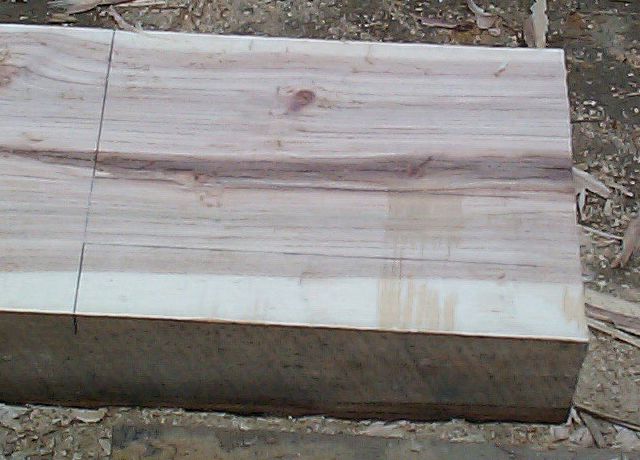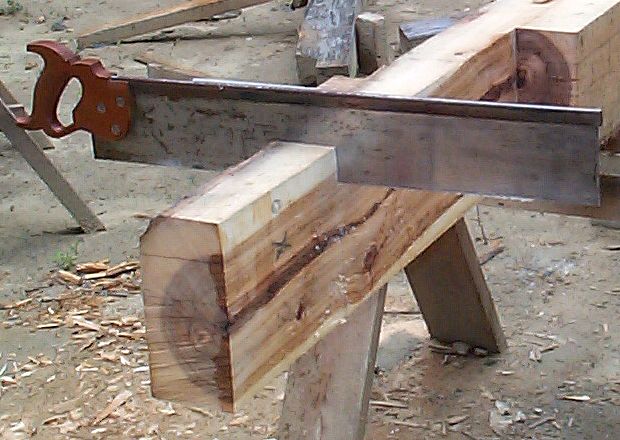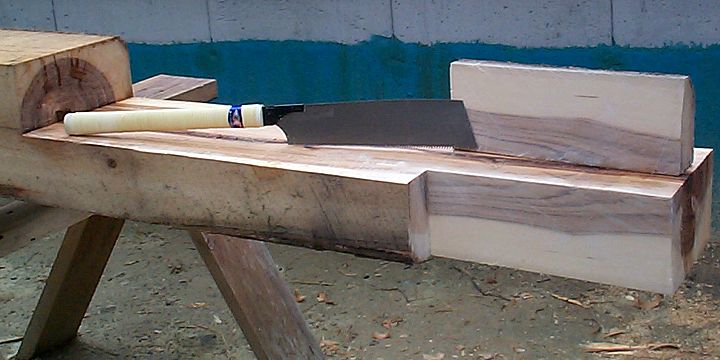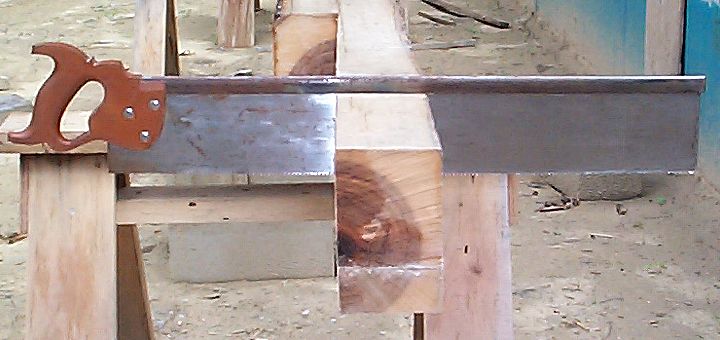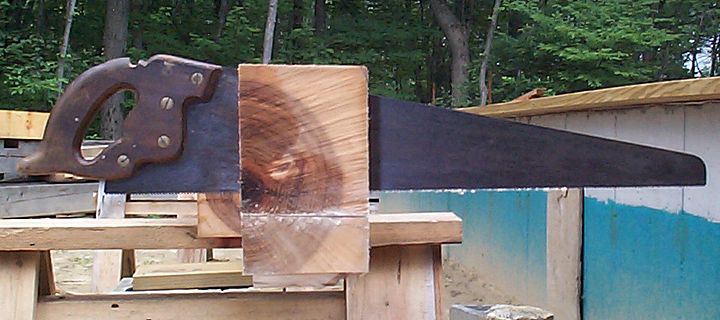
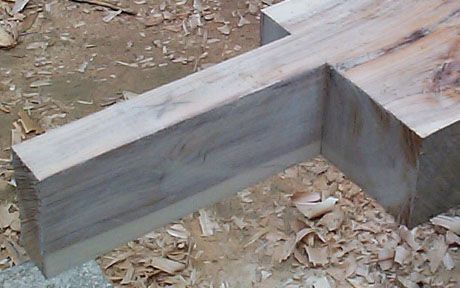
Above is the nearly finished tenon, it needs to be cut to length and a peg hole. To the left is the full timber and scarf. The scarf still needs a mortise to accept the tenon of the opposite member.
In a vain attempt to keep the loading times of pages down to a something reasonable; this joint will be concluded on another page.





